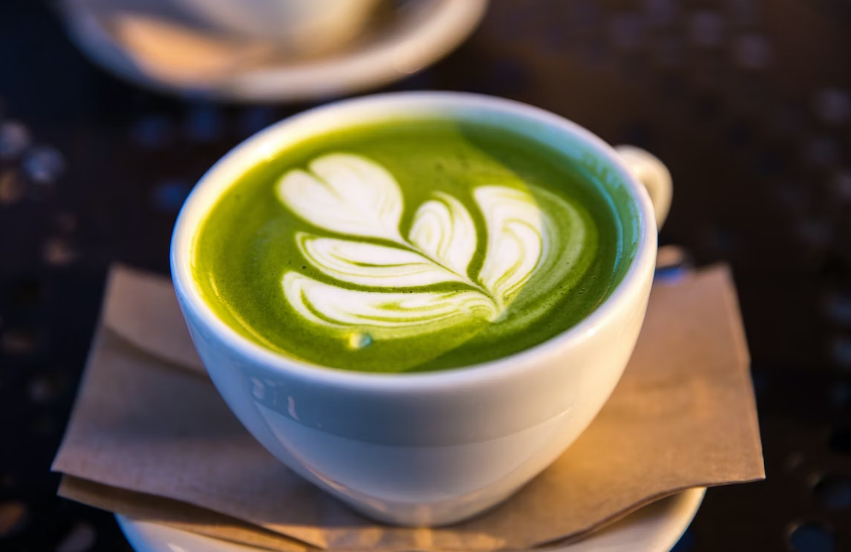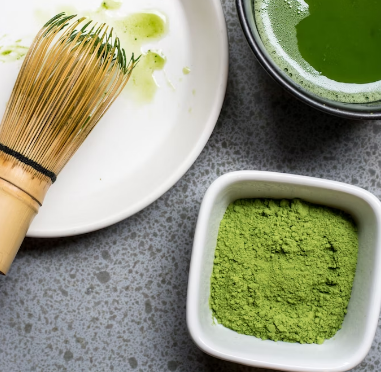Matcha lattes, Matcha cakes, Matcha ice cream… The green colored Matcha cuisine is really tempting. So, do you know what Matcha is? What nutrients does it have? How to choose?
What is Matcha?
Matcha originated in the Tang Dynasty and is known as the “end tea”. Tea grinding, which involves manually grinding tea leaves into powder using a stone mill, is a necessary process before boiling or cooking tea leaves for consumption.
According to the national standard “Matcha” (GB/T 34778-2017) issued by the National Standardization Administration and the General Administration of Quality Supervision, Inspection and Quarantine of China, Matcha refers to:
A micro powder tea like product made from fresh tea leaves grown under cover cultivation, which are sterilized by steam (or hot air) and dried as raw materials, and processed through grinding technology. The finished product should be delicate and even, bright green, and the soup color should also be strong green, with a fresh fragrance.
Matcha is not actually the powder of green tea. The difference between matcha and green tea powder is that the source of tea is different. During the growth process of matcha tea, it needs to be shaded for a period of time, which will inhibit the photosynthesis of the tea and inhibit the decomposition of theanine into tea polyphenols. Theanine is the main source of tea flavor, while tea polyphenols are the main source of tea bitterness. Due to the inhibition of tea photosynthesis, tea also compensates for the synthesis of more chlorophyll. Therefore, the color of matcha is greener than green tea powder, with a more delicious taste, lighter bitterness, and higher chlorophyll content.
What are the health benefits of matcha?
Matcha has a unique aroma and taste, rich in natural antioxidants and active ingredients such as theanine, tea polyphenols, caffeine, quercetin, vitamin C, and chlorophyll.
Among them, Matcha is rich in chlorophyll, which has strong antioxidant and anti-inflammatory activities and can alleviate the harm of oxidative stress and chronic inflammation to the body. The potential health benefits of matcha mainly focus on improving cognition, lowering blood lipids and blood sugar, and alleviating stress.
Research shows that the chlorophyll content of each gram of matcha and green tea is 5.65 milligrams and 4.33 milligrams, respectively, which means that the chlorophyll content of matcha is significantly higher than that of green tea. Chlorophyll is fat soluble, and it is difficult to release when brewing green tea with water. Matcha, on the other hand, is different as it is ground into powder and eaten entirely. Therefore, consuming the same amount of Matcha yields much higher chlorophyll content than green tea.
How to choose Matcha?
In 2017, the General Administration of Quality and Technology Supervision of the People’s Republic of China issued a national standard, which divided matcha into first level matcha and second level matcha based on its sensory quality.
The quality of first level matcha is higher than that of second level matcha. So it is recommended to choose first grade domestic matcha tea. If it is imported with original packaging, choose one with a greener color and softer and more delicate particles. It is best to choose small packaging when purchasing, such as 10-20 grams per package, so that there is no need to repeatedly open the bag and use it, while reducing the oxidation loss of tea polyphenols and other components. In addition, some matcha products are not pure matcha powder, but also contain white granulated sugar and vegetable fat powder. When purchasing, it is important to carefully check the ingredient list.
Reminder: If you are drinking it, brewing it with boiling water can maximize the antioxidant capacity of matcha, but you must let it cool before drinking, preferably below 50 ° C, otherwise there is a risk of burning the esophagus.
Post time: Nov-20-2023







